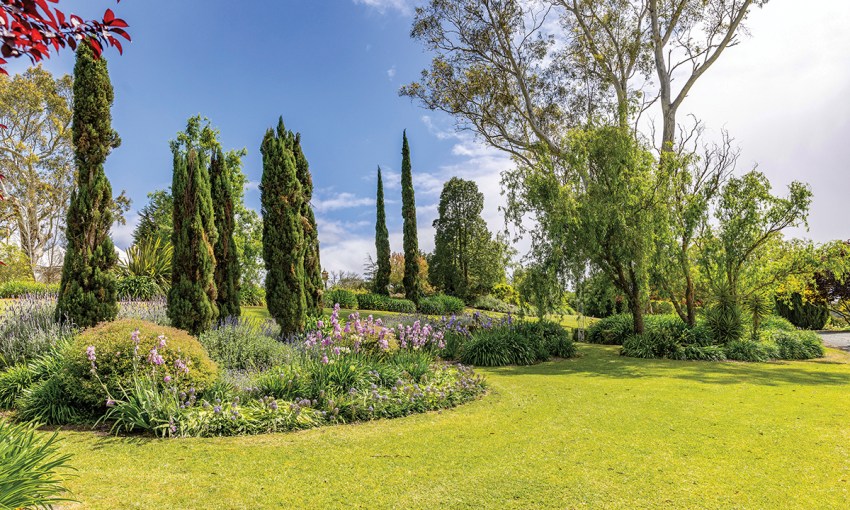Stumbling upon this property in the Adelaide Hills, Tracey and John Koumi might have purchased the 60-acre farm on a whim, but have purposefully cared for this incredible garden coated in more than 300,000 agapanthus.
A sea of blooms
Swaying gently back and forth in the breeze, more than 300,000 agapanthus create a sea of blue as their mauve blooms move like gentle waves rolling onto shore. There are agapanthus of every size and colour blooming in the fields.
Standard white and blue agapanthus grow alongside dark varieties such as Guilfoyle and Black Buddhist. Miniature Snowballs flaunt their delicate, white flowers en masse, while Dutch Blue Giants tower above the rest with their ultramarine blooms. Even the dainty Semi-Dwarf Albo Roseus Compacta makes an appearance; the upturned white blooms kissed with blush.
These are only a small selection of the 20 agapanthus varieties Tracey and John Koumi grow at Littlewood Agapanthus Farm. The couple purchased the property seven years ago while looking for a small acreage to settle down on with their three horses.
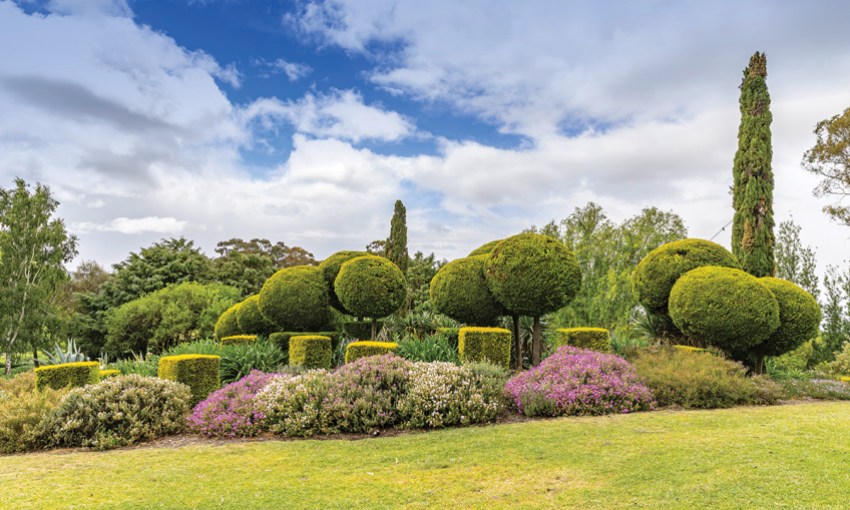
“We were looking around and couldn’t find anything we wanted, so we decided to go into the Adelaide Hills and have a look at everything on the market to essentially compare apples with apples,” Tracey says.
“We stumbled across this property as it was having an open inspection and decided to have a look even though we knew it would be too big for us. We headed up the driveway and fell absolutely in love with it. We are usually very sensible people, but we purchased it on an emotional whim.”
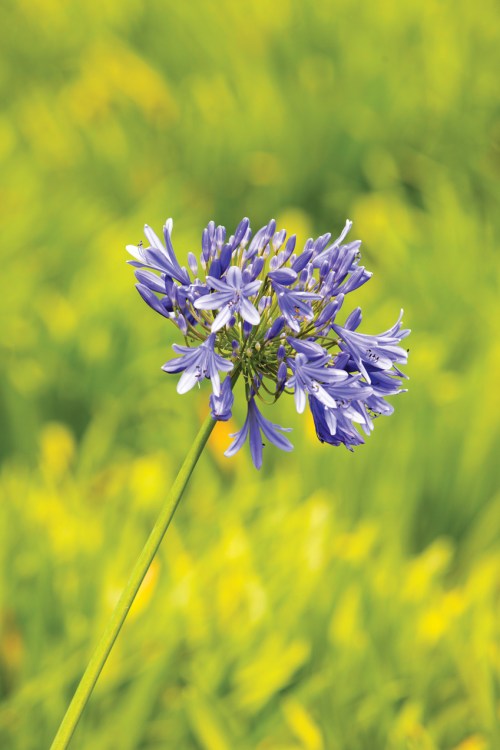
As a naturopath and lifelong gardener, Tracey had the skills and passion to take on the 60-acre farm, and with the help of the former owners and her horticulturalist sister, she has seen the garden flourish.
“Moving to this garden was a huge learning experience, but I have always been a gardener and I have always liked agapanthus, I just didn’t realise how much diversity there is in them,” she says.
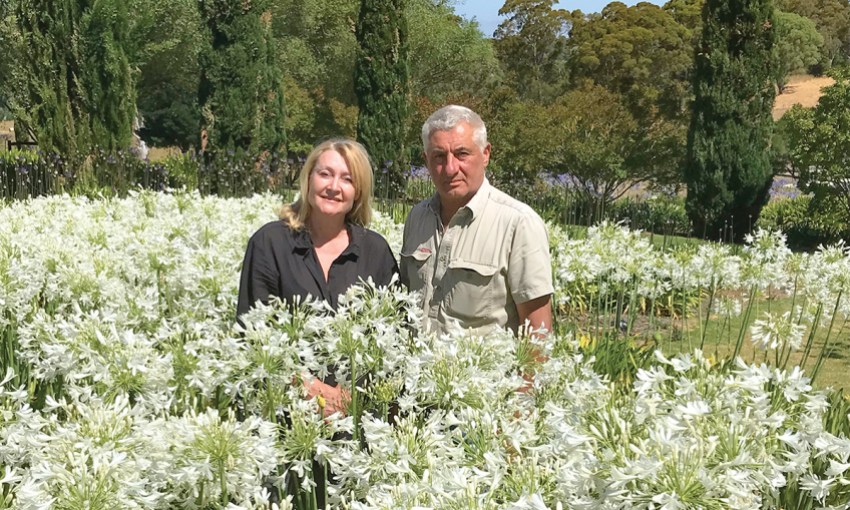
The garden flaunts more than just agapanthus, with plenty of diversity in the garden beds that sit among the property’s sprawling lawns.
“There is always something in bloom,” Tracey says. “We are constantly increasing the variety of flowers in the garden to ensure we have something flowering at all times.”
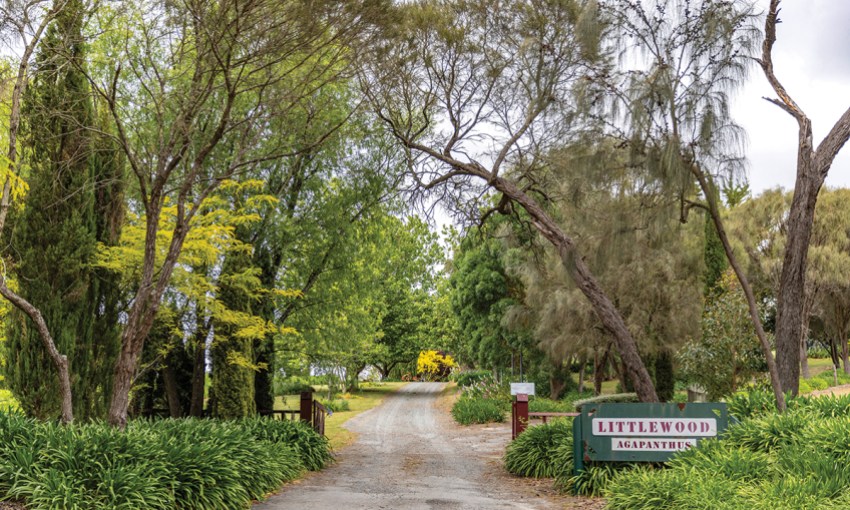
Up the property’s hillside is a pavilion surrounded by a topiary garden with manicured lawns and hedges.
Mock orange trees flower their dainty cream blooms alongside milky crepe myrtle and magnificent magnolia, while white lavender and roses grow beneath their leaves and karkalla with little white flowers spreads as groundcover.
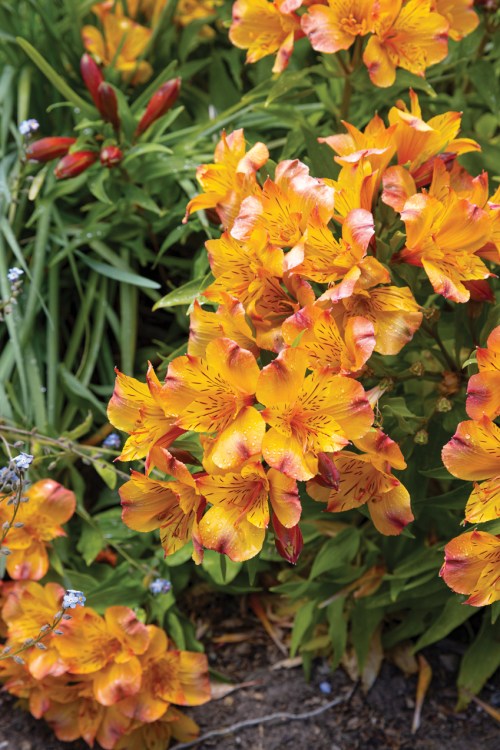
Nearby, a sunken garden flaunts plenty of colour with irises, lavender, geraniums and red hot pokers clustered beneath butterfly trees and corkscrew willows.
Surrounding a nearby lake are dozens of splendid established trees – fir trees bordered by privet hedges, weeping silver birch and cherries nearby.
A pair of spectacular smoke bushes are a marvel with their deep maroon leaves and smoky burgundy wisps that flitter through the air whenever the wind blows.
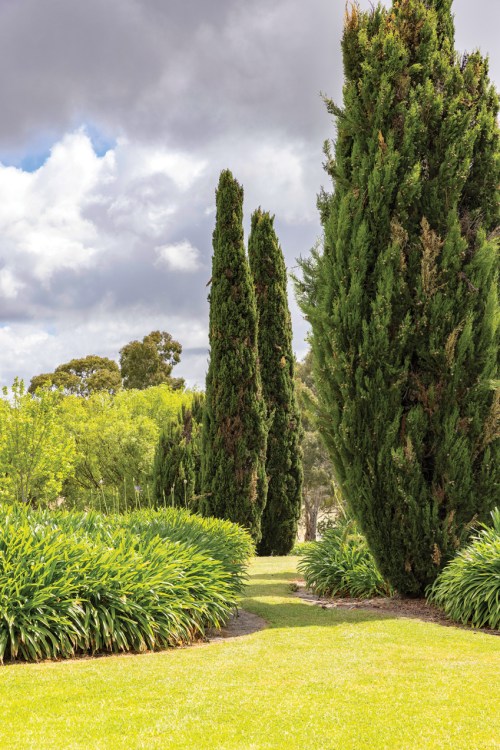
Plane trees line the driveway and three glorious elm trees – a wych elm (Ulmus glabra), a golden elm and a silver elm – stand proudly with their colossal trunks and winding branches.
Tracey says when she and John first arrived at the property, the trees were suffering from elm leaf beetle and were in poor condition.
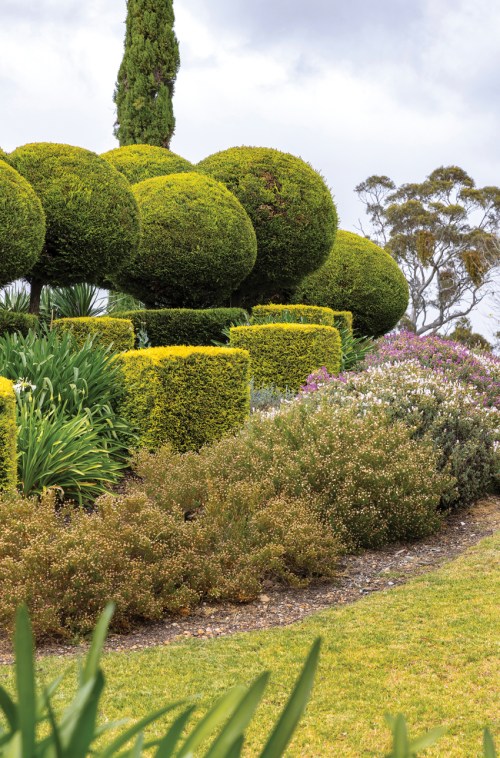
“We looked at them and knew we couldn’t let them die – they’re too mature and lovely,” she says. “We treated all of the trees and I think we have won because I haven’t seen any evidence of the beetles in the past few years and the trees are thriving.”
The couple has also planted an orchard and vegetable garden where they grow plenty of fresh produce using the Hügelkultur method – a horticultural technique where plants are grown on raised, earthen mounds constructed using decaying wood debris and other compostable matter for long-term fertilisation and moisture retention
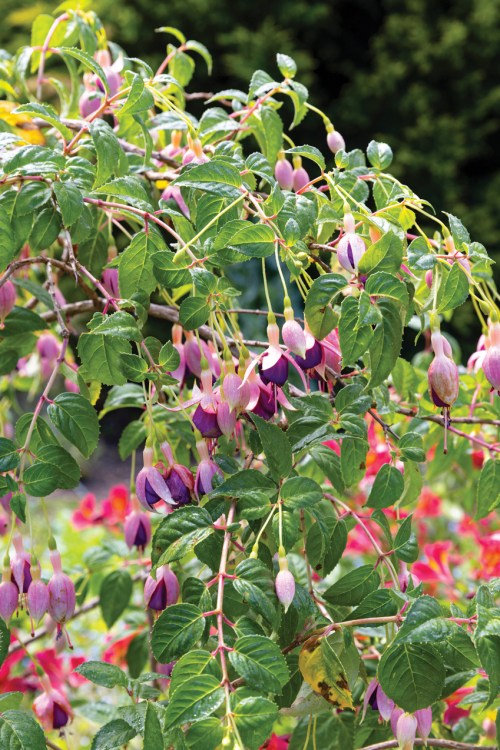
“As a herbalist, I am a huge herb-lover, so we grow a wide assortment of both medicinal and culinary herbs,” Tracey says.
The orchard is brimming with nectarines, plums, apricots and peaches.
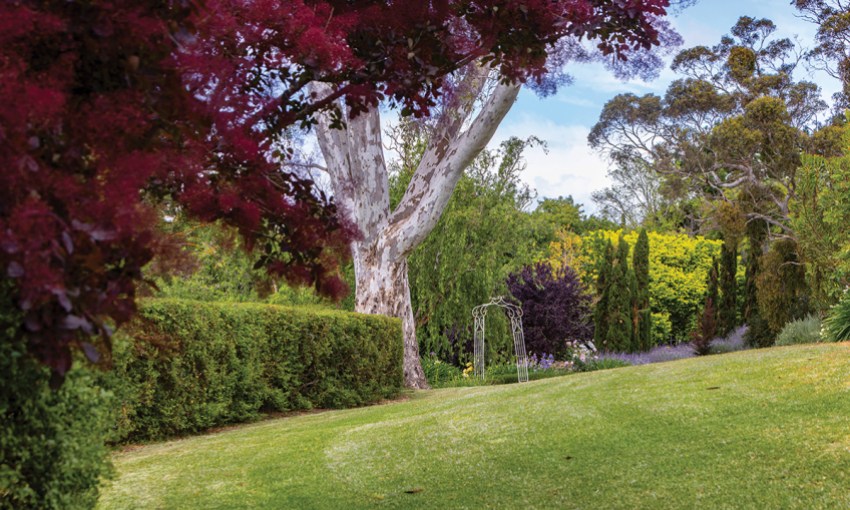
“The orchard is a bit of a struggle between us and the rabbits, birds and rats,” Tracey says with a laugh. “I think one of the best things about agapanthus is that rabbits don’t eat them.”
Although rabbits don’t eat the agapanthus, Tracey and John’s cows are big fans.
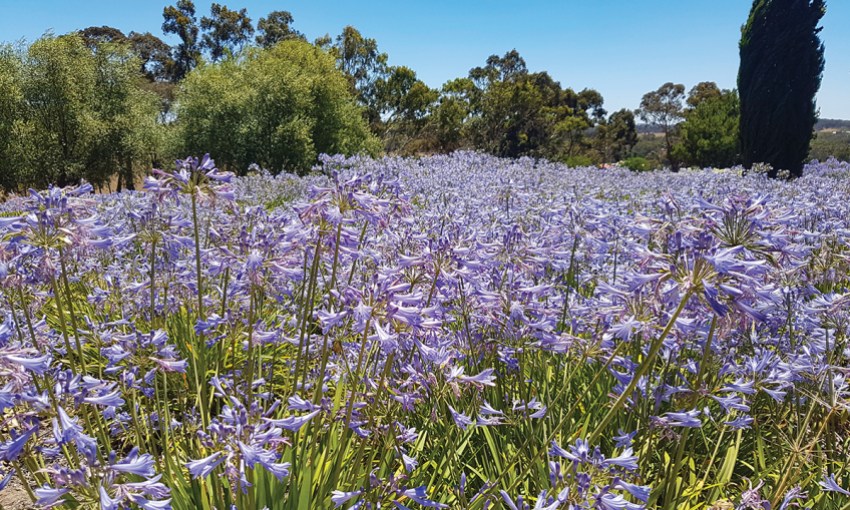
“When we have finished deadheading thousands of agapanthuses, the cows absolutely adore eating them – especially the green pods that come after the petals are gone. John had the deadheads analysed and it turns out they’re a grade-A fodder for cows, which explains why they come running over whenever they see us bringing them to the paddock.”
Every year after the agapanthus have been deadheaded and fed to the cows, the couple divide and replant the agapanthus for a continuous supply on the farm.
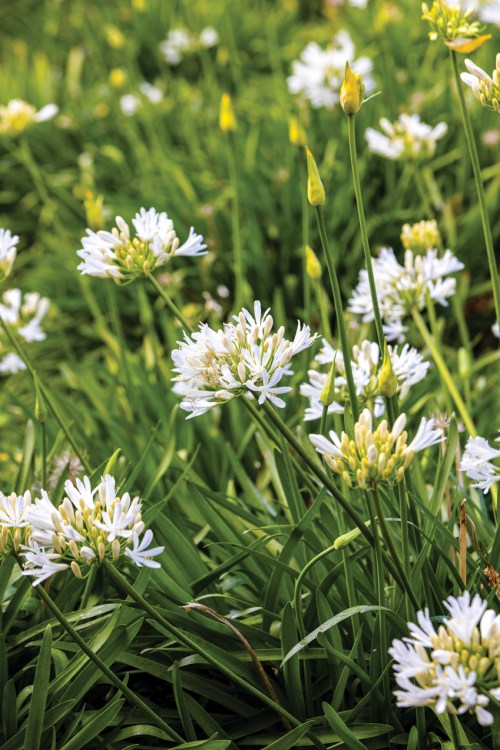
“We don’t do tissue cultures or anything like that, which is why all the agapanthus we sell are mature and ready to go straight into the garden.”
They will also fertilise their agapanthus once a year: “People tend to think that you don’t need to do anything to keep agapanthus growing, but if you give them a little bit of love they respond really well and produce even more beautiful blooms.”
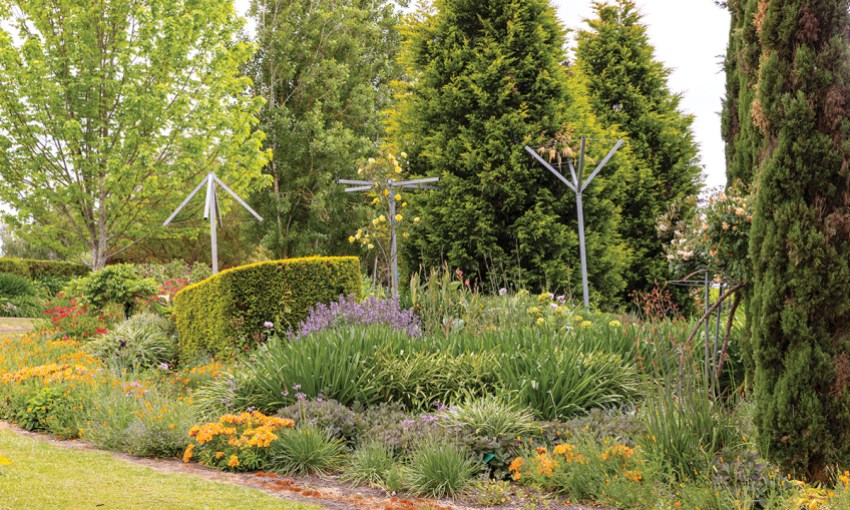
Tracey says she got her love of gardening from her mother who she used to help in the garden when she was younger: “If I ever couldn’t find Mum, she was certainly out in the garden.”
Now 84 years old, Tracey’s mum still gets out in the garden each week, heading up to Littlewood Agapanthus Farm on Fridays with Tracey’s sister to help on the property.
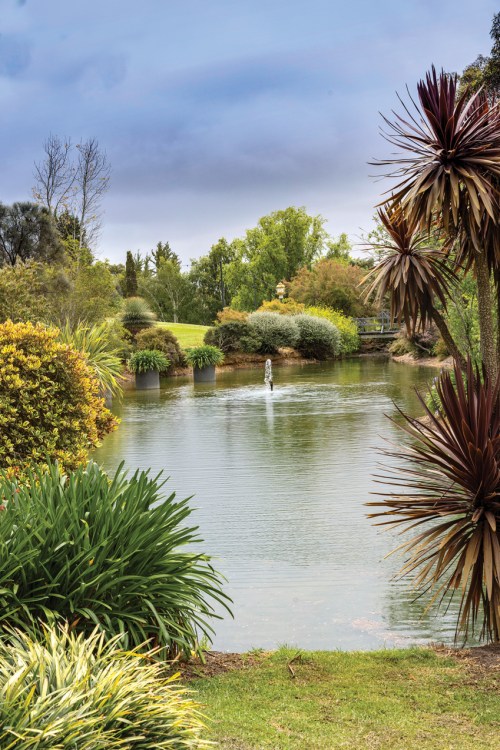
“Mum still prunes the roses and will inspect them if we have done it and tell us what we did wrong,” Tracey says with a laugh. “It is really lovely for me now to see her just coming up and doing what she wants to do: having a potter around, giving her opinion and helping in the garden. I really appreciate and enjoy the time I spend with her and my sister up here.”
You can find Tracey and John online here or on Facebook and Instagram.
This article first appeared in SALIFE Gardens & Outdoor Living Magazine Summer 2023.
including free delivery to your door.



